Reviews
Kaiju-shima no Kessen Gojira no Musuko / Monster Island’s Decisive Battle: Godzilla’s Son
Jun Fukuda
Japan, 1967
Credits
Review by Leo Goldsmith
Posted on 08 February 2013
Source Tristar DVD
Categories The Compleat Godzilla
On Sogell Island, a remote South Pacific locale, a U.N.-funded team of scientists conducts a secret experiment. It’s a tricky experiment, which they hope will help combat famine. But as it involves the release of radioactive, atmosphere-altering balloons, they must conduct their operation in secret, on this out-of-the-way island. As luck would have it, though, this is a monster island, populated by giant praying mantises, elusive native nymphettes, and strange frequencies.
In this way, Son of Godzilla follows its predecessor Ebirah, Horror of the Deep perhaps a little too closely. It’s an anomalous entry in the series for a number of reasons, not least for its non-Japanese setting (including an ersatz jungle set straight out of Gilligan’s Island) and its score by Masaru Sato (a kind of jaunty exotica reminiscent of the hip rhumbas that would often accompany episodes of The Man from U.N.C.L.E.). But it’s also, as the title suggests, the first in the series to build something like a Godzilla family tree—or at very least a modicum of insight into the maturation of the giant dinosauric monster’s species as a whole.
The precise provenance of this creature, which is henceforth (though not in this film) known as Minilla, is far from clear. All that we know is that, following a mishap with the experiment that raises the island’s temperature, strange changes ensue. The already giant mantises - now named Kamacuras - grow even larger and proceed to pound their claws on a similarly giant egg for what seems like twenty-four hours straight. Finally, out pops a grey, fleshy lizard-like being whose puppy-like whimpers, reaching a climax while under siege from the Kamacuras, summon Godzilla to the rescue.
But this apparent protective paternalism remains unexplained. In fact, notwithstanding the film’s title and occasional remarks from its characters, there’s very little to suggest that Minilla is in fact Godzilla’s biological descendent. There is no mother mentioned (unless, contrary to Toho’s own lore, Godzilla is in fact female), and Minilla barely looks like Godzilla, better resembling the titular extraterrestrial in Mac and Me. More repulsive than adorable, the bathetic creature usually sports a moist, toothless, and imbecilic grin, befriends humans, and has a tendency to fall over.
But genealogical conundrums aside, Godzilla nonetheless feels some affinity for the younger reptilian, straight-up body-slams one of the Kamacuras, and spirits Minilla away by letting him ride his tail. Later, Godzilla lounges around while the kid plays soccer with boulders, then puts him to task by teaching him some self-defense, behaving, as one character has it, “just like the education fanatics in Japan [who] they don’t let their children play.” Godzilla, not surprisingly, proves a stern parent, threatening Minilla with the back of his hand and displaying visible frustration when his “son” can only muster lame radioactive smoke rings in place of the “father“‘s trademark nuclear breath.
Nonetheless, this proves enough to eventually defeat Kumonga, the island’s resident giant spider, which has diamonds for eyes and shoots webs that look like party-streamers, who is inadvertently awakened from a long slumber. This showdown, a father-and-son team up held amid a blizzard orchestrated in a last ditch effort by the experimental meteorologists, is the film’s true highlight, a curious denouement to an already odd film, which concludes with the startling image of a snowbound Godzilla and Son locked in a tender hibernatory embrace.
More The Compleat Godzilla
-
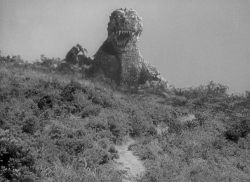
Godzilla
1954 -
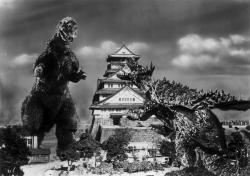
Godzilla Raids Again
1955 -
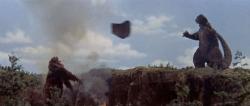
King Kong vs. Godzilla
1962 -
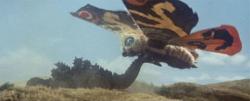
Mothra vs. Godzilla
1964 -
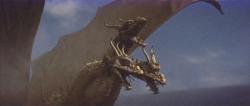
Ghidorah, the Three-Headed Monster
1964 -
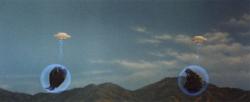
Invasion of Astro-Monster
1965 -

Ebirah, Horror of the Deep
1966 -
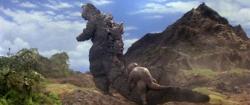
Son of Godzilla
1967 -

Destroy All Monsters!
1968 -
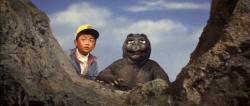
All Monsters Attack
1969 -

Godzilla Vs. Hedorah
1971 -
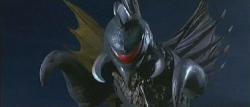
Godzilla vs. Gigan
1972 -
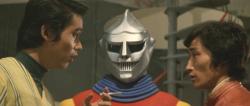
Godzilla vs. Megalon
1973 -
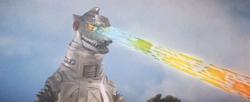
Godzilla vs. Mechagodzilla
1974 -
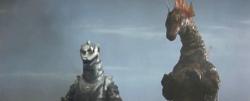
Terror of Mechagodzilla
1975 -
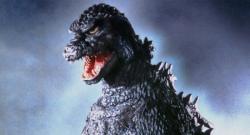
The Return of Godzilla
1984 -
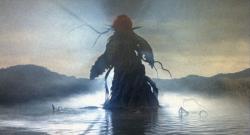
Godzilla vs. Biollante
1989 -
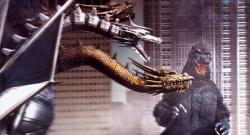
Godzilla vs. King Ghidorah
1991 -
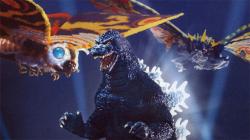
Godzilla vs. Mothra
1992 -
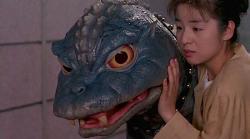
Godzilla vs. Mechagodzilla
1993 -
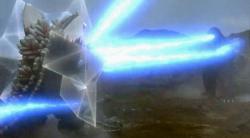
Godzilla vs. SpaceGodzilla
1994 -
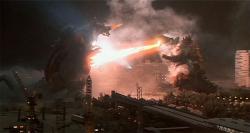
Godzilla vs. Destoroyah
1995 -
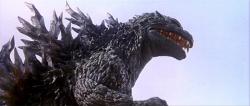
Godzilla 2000
1999 -
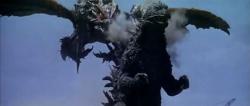
Godzilla vs. Megaguirus
2000 -
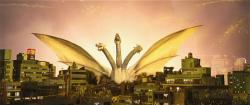
Godzilla, Mothra and King Ghidorah: Giant Monsters All-Out Attack
2001 -

Godzilla Against Mechagodzilla
2002 -

Godzilla: Tokyo S.O.S.
2003 -
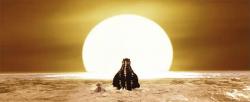
Godzilla: Final Wars
2004
We don’t do comments anymore, but you may contact us here or find us on Twitter or Facebook.



